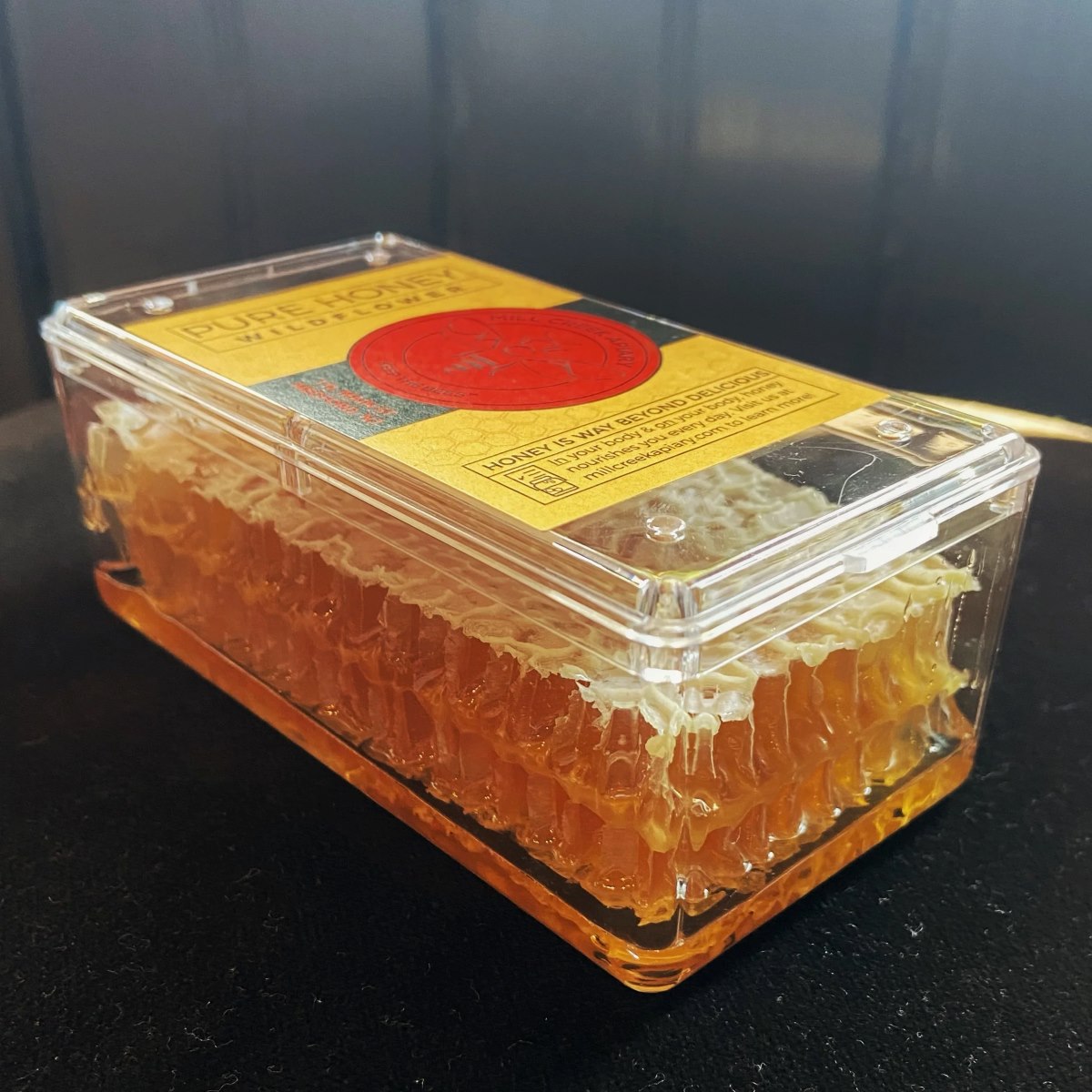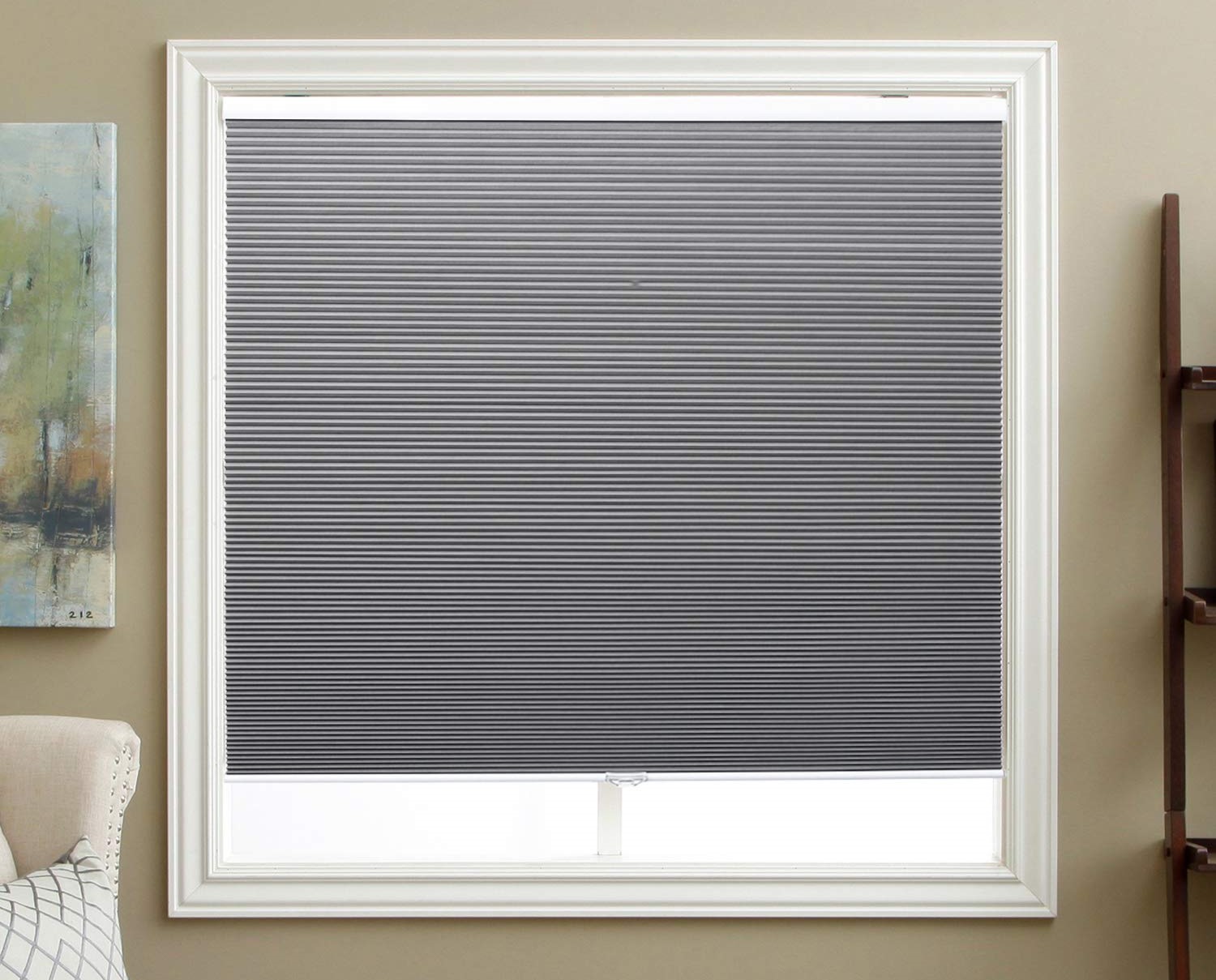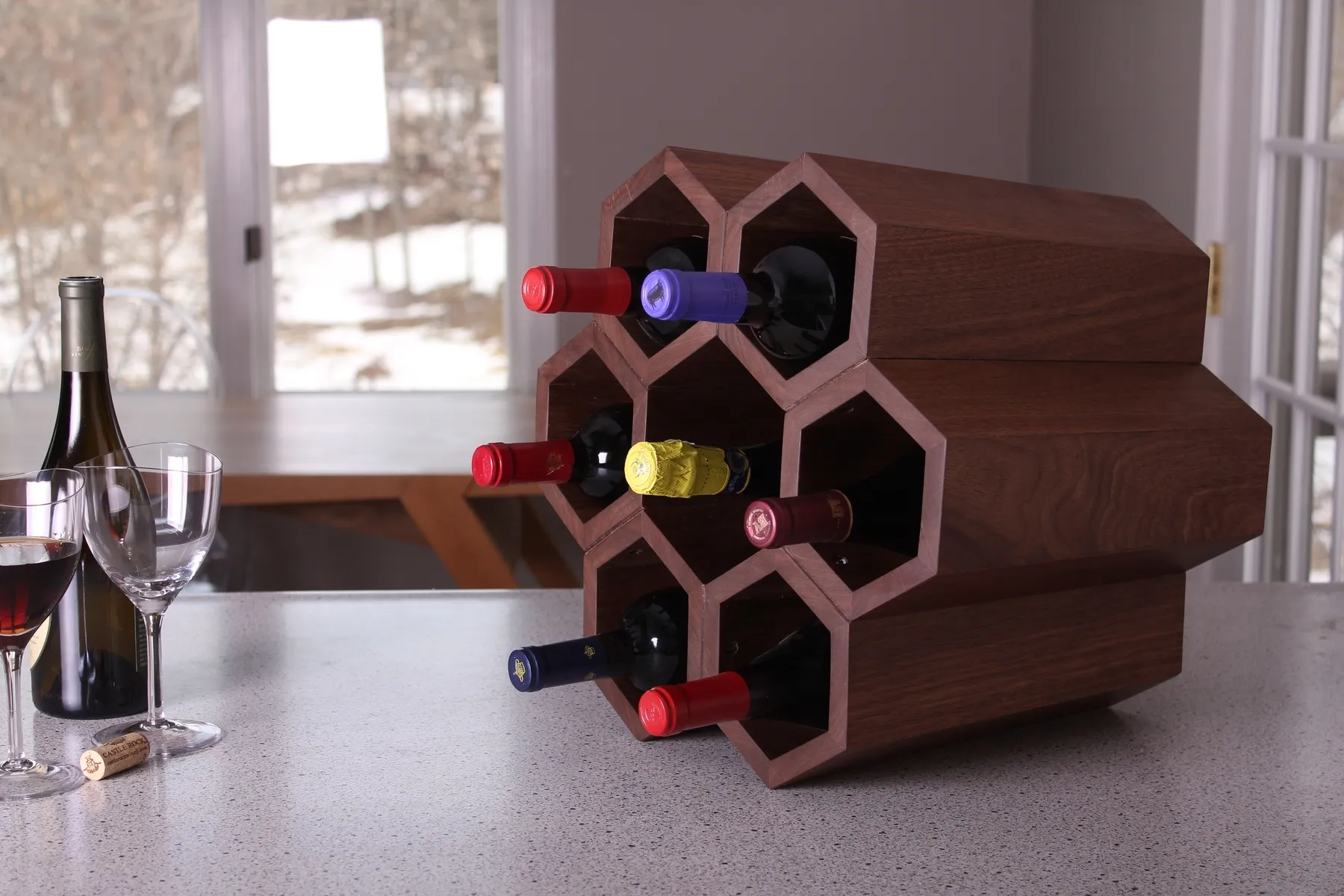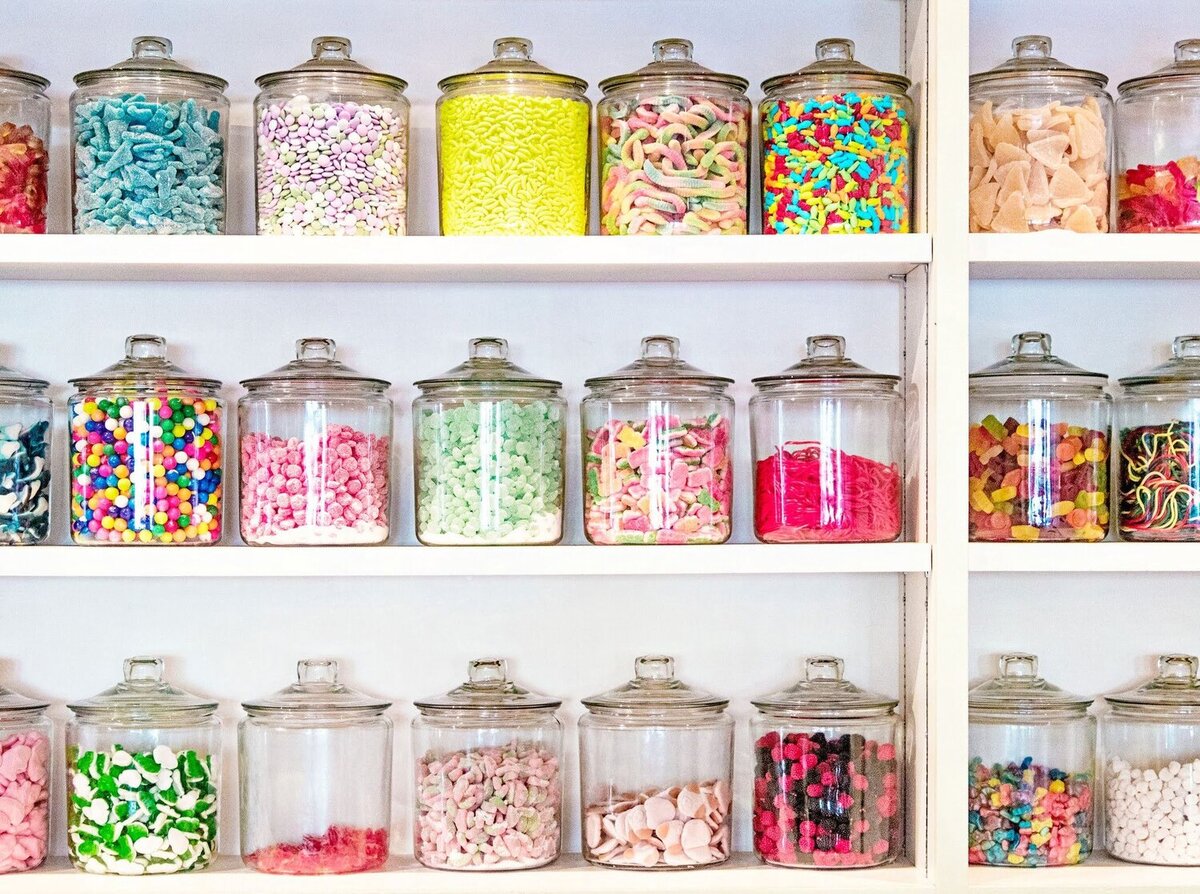

Articles
How To Store Honeycomb
Modified: December 7, 2023
Learn the best techniques to store honeycomb in this informative articles. Ensure your honeycomb stays fresh and delicious with proper storage tips.
(Many of the links in this article redirect to a specific reviewed product. Your purchase of these products through affiliate links helps to generate commission for Storables.com, at no extra cost. Learn more)
Introduction
Storing honeycomb properly is essential to maintain its freshness and preserve its unique texture and flavor. Whether you are a beekeeper or simply a honey enthusiast, understanding the best practices for storing honeycomb will ensure that you can savor its delicious taste for an extended period of time.
Honeycomb is the natural structure created by bees to store their honey. It consists of hexagonal cells made out of beeswax, filled with honey and sealed with a protective wax cap. When harvested, honeycomb is a delicacy enjoyed by many due to its rich flavor and chewy texture.
Proper storage of honeycomb is crucial as it can be affected by external factors such as temperature, humidity, and exposure to light. These factors can impact the quality, taste, and shelf life of the honeycomb. In this article, we will explore the different methods of storing honeycomb, from room temperature storage to refrigeration and freezing, as well as share some tips for long-term storage.
Before we delve into the specifics of honeycomb storage, it is important to note that honeycomb, like honey itself, has an incredibly long shelf life. When stored properly, honeycomb can last for months, and even years, without spoiling. However, improper storage can lead to changes in texture, crystallization, and loss of flavor.
Now that we understand the importance of proper honeycomb storage, let’s explore the different methods and containers that can be used to store this delectable treat.
Key Takeaways:
- Proper storage of honeycomb is crucial to maintain its freshness and unique texture. Whether at room temperature, in the refrigerator, or freezer, attention to environmental conditions and container selection is key to preserving its delightful characteristics.
- When storing honeycomb, choose airtight, non-reactive containers, and wrap each piece in parchment paper. Whether at room temperature, in the refrigerator, or freezer, proper preparation and attention to detail ensure the honeycomb maintains its quality and flavor for an extended period.
Read more: How To Store Raw Honeycomb
Choosing the Right Container
When it comes to storing honeycomb, selecting the right container is essential to maintain its quality and preserve its unique characteristics. Here are some factors to consider when choosing a container for your honeycomb:
- Airtight: Honeycomb is susceptible to moisture, which can affect its texture and cause it to spoil. Therefore, it is crucial to choose an airtight container that will prevent moisture from entering and compromising the quality of the honeycomb.
- Non-reactive: Honeycomb contains natural acids that can react with certain materials, such as metal or plastic, potentially altering the taste and quality of the honeycomb. It is best to choose a container made of glass, ceramic, or food-grade stainless steel, as these materials are non-reactive and will not affect the flavor of the honeycomb.
- Size and Shape: Consider the size and shape of the container based on the amount of honeycomb you have and how you plan to use it. Smaller individual containers are ideal if you want to store portions of honeycomb for personal consumption, while larger containers are suitable for storing larger quantities or for sharing with others.
- Visibility: Opt for a container that allows you to see the honeycomb inside without opening it. This will enable you to assess the condition and quality of the honeycomb without compromising its freshness.
Now that you have an idea of what to look for in a honeycomb storage container, let’s move on to the next step: preparing the honeycomb for storage.
Preparing the Honeycomb for Storage
Before storing honeycomb, it is important to ensure it is properly prepared to maintain its quality and freshness. Here are the key steps to follow when preparing honeycomb for storage:
- Inspect the Honeycomb: Carefully examine the honeycomb to ensure it is in good condition, free from any mold, pests, or other contaminants. Discard any honeycomb that appears damaged or compromised.
- Clean the Container: Thoroughly clean the storage container you have chosen by washing it with hot, soapy water. Rinse it well to remove any residue or soap, and allow it to dry completely before transferring the honeycomb.
- Wrap in Parchment Paper: To protect the honeycomb from air exposure, it is recommended to individually wrap each piece in parchment paper. This will help maintain its moisture levels and prevent it from drying out.
- Seal the Container: Place the wrapped honeycomb pieces in the airtight container, ensuring there is no empty space left inside. Seal the container tightly to prevent any air or moisture from entering.
- Label and Date: Don’t forget to label the container with the date of storage. This will help you keep track of how long the honeycomb has been stored and ensure you consume it within a reasonable timeframe.
By following these preparation steps, you can ensure that your honeycomb is ready for storage and will maintain its freshness and quality for an extended period.
Now that the honeycomb is prepped and ready, let’s explore the different methods of storing honeycomb based on the desired storage conditions.
Storing Honeycomb at Room Temperature
Storing honeycomb at room temperature is a popular method, especially if you plan to consume it within a few weeks. Here are some guidelines for storing honeycomb at room temperature:
- Choose a Cool and Dark Location: Find a cool, dark area in your pantry or kitchen where the temperature remains relatively stable. Avoid places that are exposed to direct sunlight or excessive heat, as this can cause the honeycomb to melt or crystallize.
- Keep Away from Strong Odors: Honeycomb has a natural ability to absorb odors, so it is important to store it away from strong-smelling foods or substances that could impact its flavor. Keep it in a separate container or wrapped tightly in parchment paper.
- Monitor for Changes: Regularly check the honeycomb for any signs of spoilage, such as mold or discoloration. If you notice any changes, discard the affected honeycomb immediately.
- Rotate and Consume Within a Reasonable Timeframe: To ensure the best quality and flavor, it’s recommended to consume the honeycomb within three to six months of storage. If you have multiple pieces, rotate them so that the oldest ones are used first.
It’s important to note that storing honeycomb at room temperature may cause it to crystallize over time. Crystallization is a natural process in which the sugars in the honeycomb solidify and give it a granular texture. If you prefer a softer texture, you can gently warm the honeycomb to liquefy it before consumption.
If you anticipate storing honeycomb for a longer period or are concerned about the potential for crystallization, it might be best to consider refrigeration or freezing as alternative storage options, which we’ll explore in the next sections.
Now that you know how to store honeycomb at room temperature, let’s delve into the process of storing it in the refrigerator.
Store honeycomb in a cool, dry place away from direct sunlight to prevent it from melting or becoming too sticky. A pantry or kitchen cabinet is a good option.
Storing Honeycomb in the Refrigerator
If you prefer to extend the shelf life of your honeycomb or prevent crystallization, storing it in the refrigerator is a suitable option. Here’s how to store honeycomb in the refrigerator:
- Choose an Airtight Container: Transfer the honeycomb to an airtight container, ensuring it fits comfortably without squishing or deforming the comb. Glass or food-grade plastic containers with a tight-fitting lid are ideal for refrigerator storage.
- Find the Right Temperature: Set your refrigerator to a temperature between 36°F (2°C) and 45°F (7°C) to maintain the freshness and quality of the honeycomb without freezing it.
- Keep Away from Other Foods: Store the container of honeycomb away from strong-smelling foods or items with strong flavors to avoid any cross-contamination of odors.
- Monitor for Changes: Regularly inspect the honeycomb for any signs of mold, discoloration, or deterioration. If any issues are detected, discard the affected honeycomb immediately.
- Label and Date: Remember to label the container with the date of storage, ensuring that you consume the honeycomb within a reasonable timeframe.
By following these steps, you can maintain the freshness and quality of your honeycomb for an extended period in the refrigerator. Honeycomb stored in the refrigerator can typically last for several months.
While refrigeration can help prevent crystallization, it’s important to note that extremely cold temperatures can cause the honeycomb to harden and lose some of its natural texture. If you prefer a softer and more chewable honeycomb, allow it to come to room temperature before consuming.
Now that you know how to store honeycomb in the refrigerator, let’s explore the option of freezing honeycomb for long-term storage.
Read more: How To Store Fresh Honeycomb
Storing Honeycomb in the Freezer
For long-term storage, freezing honeycomb is an effective method to maintain its quality and freshness. Here’s a step-by-step guide on how to store honeycomb in the freezer:
- Wrap Individually: Wrap each piece of honeycomb tightly in plastic wrap or place it in an airtight freezer bag. Ensure that the honeycomb is well-protected and sealed to prevent freezer burn.
- Place in Freezer-Safe Container: Transfer the wrapped honeycomb pieces into a freezer-safe container or airtight freezer bag. Label the container with the date of freezing for reference.
- Choose the Right Freezer Temperature: Set your freezer to a temperature below 0°F (-18°C) to ensure that the honeycomb remains frozen and properly preserved.
- Avoid Fluctuations: Keep the honeycomb away from the freezer door, as it may experience temperature fluctuations each time the freezer is opened. Place it in a stable location within the freezer.
- Thawing Process: When you’re ready to use the honeycomb, transfer it from the freezer to the refrigerator and let it thaw slowly. This will help maintain the texture and quality of the honeycomb.
When stored in the freezer, honeycomb can last up to a year or even longer. Freezing prevents crystallization and helps to maintain the natural texture and flavor of the honeycomb. However, keep in mind that freezing may slightly alter the consistency of the honeycomb, making it less pliable and chewy compared to fresh honeycomb.
It’s important to note that while frozen honeycomb remains safe to eat indefinitely, the quality may degrade over time. It is recommended to consume the frozen honeycomb within a reasonable timeframe to enjoy its optimal flavor and texture.
Now that you’re familiar with the process of storing honeycomb in the freezer, let’s move on to some additional tips for long-term storage.
Tips for Long-Term Storage
To ensure that your honeycomb stays fresh and maintains its quality during long-term storage, consider the following tips:
- Store in Small Portions: If you have a large quantity of honeycomb, consider dividing it into smaller portions before storing. This allows you to thaw only what you need, reducing waste and helping to preserve the remaining honeycomb.
- Keep Away from Moisture: Moisture can lead to spoilage and degradation of the honeycomb. Ensure that your storage container is completely dry before transferring the honeycomb, and avoid exposing it to humid environments.
- Avoid Temperature Fluctuations: Maintain a consistent storage temperature for your honeycomb to prevent changes in texture and quality. Avoid moving it between extreme temperature environments, as this may cause condensation and affect its stability.
- Protect from Light: Honeycomb is sensitive to light exposure, so it’s best to store it in a dark or opaque container to limit the impact of light on its quality. This can help preserve its taste and prevent any potential color changes.
- Rotate and Consume: Although honeycomb has an impressive shelf life, it’s always best to rotate and consume it within a reasonable timeframe. This ensures that you enjoy it when it is at its freshest and most flavorful state.
By following these tips, you can maximize the shelf life and quality of your honeycomb, whether you store it at room temperature, in the refrigerator, or in the freezer.
Remember, proper storage and handling are crucial for maintaining the taste, texture, and quality of the honeycomb. Whether you’re a beekeeper with fresh honeycomb from your hive or a honey lover who wants to savor this delectable treat, employing the right storage methods will ensure that your honeycomb remains a delightful indulgence for months to come.
Now that you have a comprehensive understanding of storing honeycomb, choose the method that best suits your needs and enjoy the natural sweetness and unique texture of this remarkable gift from the bees.
Conclusion
Honeycomb is a remarkable natural delicacy, cherished for its exquisite flavor and unique texture. By properly storing honeycomb, you can ensure that it maintains its freshness, taste, and quality for an extended period of time.
Whether you choose to store honeycomb at room temperature, in the refrigerator, or in the freezer, it is important to consider factors such as temperature, moisture, light exposure, and container selection. Following the appropriate storage methods will help preserve the characteristics that make honeycomb such a delightful treat.
Storing honeycomb at room temperature is ideal for short-term consumption, while refrigeration can extend its shelf life and prevent crystallization. Freezing honeycomb is a suitable option for long-term storage, maintaining its texture and taste for a year or more.
When preparing honeycomb for storage, inspect it carefully, clean the container thoroughly, and wrap each piece individually to protect it from air exposure. Properly labeled and dated containers will help you keep track of storage time and ensure that you consume the honeycomb within a suitable timeframe.
Long-term storage necessitates attention to environmental conditions, avoiding fluctuations in temperature and exposure to moisture. Dividing honeycomb into smaller portions, protecting it from light, and consuming it within a reasonable timeframe are vital for maintaining its quality.
By employing these methods and following the tips outlined in this article, you can enjoy the delectable taste and unique experience of honeycomb long after it has been harvested. So, whether you are a beekeeper with fresh honeycomb or a honey enthusiast, take the necessary steps to store your honeycomb properly and savor its natural goodness for months to come.
Remember, honeycomb is a gift from nature, and by storing it correctly, you can ensure that its magic remains intact until the moment you indulge in its sweet and chewy wonderment.
Frequently Asked Questions about How To Store Honeycomb
Was this page helpful?
At Storables.com, we guarantee accurate and reliable information. Our content, validated by Expert Board Contributors, is crafted following stringent Editorial Policies. We're committed to providing you with well-researched, expert-backed insights for all your informational needs.















0 thoughts on “How To Store Honeycomb”